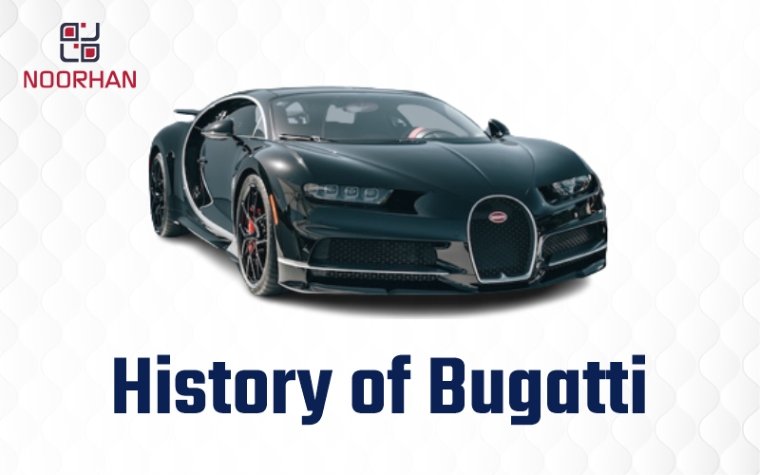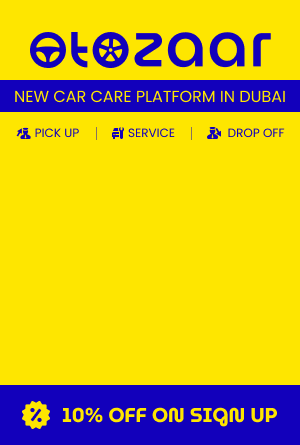History of Mazda
Since 1909, Bugatti has been producing luxury automobiles in Molsheim, France. Bugatti automobiles are renowned for their elegant design and innovative manufacturing. Additionally, it is known for producing rapid automobiles. The performance of these vehicles has made them one of the world’s most renowned racing car brands.
Midway through the 1920s, the Bugatti Type 35 was the finest racing automobile. The Bugatti Veyron, which rose to prominence in the early 2000s, was, for many years, the world’s fastest automobile. It could reach speeds of 410 kilometers per hour. Bugatti is extremely focused on its aappearance and performance and will not compromise on either.
Bugatti History:
Ettore Arco Isidoro Bugatti was born in Milan on September 15, 1881. He was Teresa and Carlo Bugatti’s oldest child. The furniture that Carlo’s father created made him a well-known and distinguished artist and designer. Ettore Bugatti began working as an apprentice at the bicycle manufacturer Prinetti & Stucchi after he finished high school. When he was 17 years old a year later, he placed an engine on a tricycle and experimented with various others.
In 1902, Ettore was appointed chief of technology at De Dietrich’s automobile company. There, he constructed multiple vehicles and raced them in numerous events. The Type 5, an upgraded Type 2 with a 12.9-liter engine and a chain drive, was one of these vehicles. As soon as Eugene de Dietrich grew weary of how heavily Bugatti concentrated on racing, his contract was terminated. As his next project, Emil Mathis in Strasbourg requested that he build a vehicle with a four-cylinder engine.
Ettore Bugatti built his 50hp automobile in 1907 and showed it to the Deutz engine company in Cologne. Bugatti took over production of the automobile after obtaining a manufacturing license. Bugatti worked on his lightweight race car in his garage as a side project.
In 1909, Ettore Bugatti used money from the financier de Vizcaya to purchase a large plot of land in Molsheim, Alsace, Germany. Ettore decided to take things a step further immediately after purchasing a new facility. To compete in the Le Mans event, he designed a compact, light racing car.
Bugatti introduced the Type 10 (pictured above), a prototype based on the Type 13. It was Ettore’s first “Pur Sang” (literally “pure blood”) automobile. In 1911, the automobile competed in the French Grand Prix against cars that had been around for a long. It finished second on the podium thanks to driver Ernest Friederich.
Bugatti’s first major victory came with the Type 13 at the Grand Prix de la Sarthe in Le Mans. Production began in 1914, and when the First World War ended in 1919, it resumed.
Several variations were created. The Type 13 produced after the war, known as the “Brescia,” took the first four positions in the 1921 Brescia Grand Prix.
The Type 30 was Bugatti’s first touring automobile, produced between 1922 and 1926. The Type 32 was a step forward from that vehicle. It had a body shell with a wing-like cross-section and was notorious for being difficult to drive since it produced more lift than drag. This car was dubbed the “Tank” because it resembled the tanks employed during World War I. The car could only finish third in the 1923 French Grand Prix.
Even though the Veyron and Chiron are Bugatti’s most famous cars now, they owe a lot to the famed Type 35. It emerged in 1924 and started Bugatti’s golden age, which lasted ten years and included more than 2,000 race wins. Undoubtedly, it was the most popular race car the world had ever seen. It won the Targa Florio five times in a row, and that was all it did.
It was also very pretty, with the now-famous “horseshoe” radiator grille and spoked aluminum wheels. Later, in 1926, the very popular Type 40 announced that Bugatti would start selling factory bodyshells from its Molsheim plant.
Type 50 was the sports coupe form of Type 46. It came out in 1930. It was said to have 225hp, which is a lot more than the 160hp that the car it was built on had. Close inspection reveals that modern Bugattis borrow much from it regarding styling.
They kept making sports cars that racers and people like luxury liked. In the late 1990s and early 2000s, Bugatti showed that it was now a company to be taken seriously.
Bugatti, on the other hand, did not become the dominating player in a hitherto untouched market until 2005.
The Veyron was Bugatti’s first production racecar. It eventually became one of the fastest production automobiles in the world. It soon became a celebrity favorite despite being one of the most costly automobiles in the world.
The Chiron Super Sport 300+ established a new record in 2019. The hypercar was the first automobile to break the 300-mph barrier. Its massive 1,600 PS quad-turbocharged W16 engine allowed it to reach a top speed of 490 kph (304 mph).
What is the outlook for Bugatti?:
In the past, supercar manufacturers such as Bentley, Aston Martin, and Rolls-Royce produced SUVs. Ferrari plans to introduce the Purosangue to its lineup. Bugatti’s CER Mate Rimac stated in an interview with the German publication Autobmobilwoche that the company has no immediate intentions to enter the race.
Rimac states that a Bugatti SUV or electric vehicle is not part of the company’s 10-year plan. Even though the SUV is not unexpected, the reality that the automaker will not produce electric vehicles (EVs) at a time when almost every other automaker is making EVs is surprising.
Notably, Bugatti foresees a world entirely propelled by internal combustion engines (ICEs) by 2032. By that time, many manufacturers would have ceased production of ICE vehicles, at least in some markets.
Even though Bugatti is not interested in electric vehicles, it cannot help but observe this trend. Shortly, stricter emission regulations will impact the leading automaker more. For this reason, Bugatti ceased production of the Mistral Roadster with the W16 engine. This suggests that the next Bugatti vehicle will feature a hybrid powertrain, succeeding the Chiron. It will likely contain a great deal of electricity.
The next Bugatti vehicle after the Chiron will likely feature a smaller internal combustion engine than a W16 engine. According to Bugatti, this automobile’s internal combustion engine would be exquisite. The vehicle will hit the market in 2024. It will be interesting to see whether Bugatti introduces a brand-new machine or one based on a Volkswagen Group combustion engine. It may utilize the same V12 engine as the replacement for the Lamborghini Aventador, which is scheduled to début in 2023.
Conclusion:
Rimac makes electric cars, so Bugatti Rimac is working toward electric and hybrid cars. Mate Rimac, the CEO of the company, said that after the Chiron, the next Bugatti car would be all-electric. Since it’s a new business, the long-term plans and goals for its different parts haven’t been set yet.
FAQs (Frequently Asked Questions)
Which Bugatti is the least expensive?
The Veyron is the Bugatti that costs the least. It costs $1,900,000.
How fast is the fastest Bugatti?
304 miles per hour. The Bugatti Chiron Super Sport 300+.
Why is the Bugatti so fast?
By far, the biggest reason Bugattis can go so fast is because of their engines.
Where can you buy Bugatti Spare Parts in Dubai?
Bugatti Spare Parts are available at different suppliers and dealers of auto spare parts in Dubai. Noorhan is amongst the leading brands that deal with genuine auto spare parts and aftermarket parts for different car brands, including BMW, Mercedes, Audi, Porsche, Honda, Toyota, Nissan, Mazda, Jeep, Ford, and other Japanese, European, American, Korean, luxury cars brand.
If you’re looking to replace your Bugatti spare parts with high-quality aftermarket parts in Dubai, Noorhan can help you.



























































